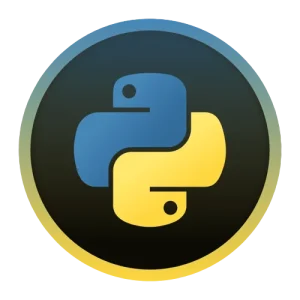Python Tutorial
Learn Python
Python is a high-level, object-oriented, structured programming language with complex semantics.The high-level data structures coupled with dynamic typing and dynamic linking render it very appealing for Rapid Application Development and for use as a scripting or glue language to link established components. Here you will get a complete tutorial in Python, with all the topics required.Let’s start our Python tutorial.

Python vs Other Programming Languages

Data Types in Python
- Keywords and Identifiers in Python
- Variables in Python
- Data Types in Python
- Dictionaries in Python
- Ranges of data types in python
- Built-in Functions in Python
- Operators in Python
- Numeric data type in Python
- Str Datatype in Python
- Iterator Data-Types in Python
- Sequence Data Types in Python
- Blocks and Statement in Python
- Indentation in Python
- Comments in Python
- Bool() in Python
- Zip() in Python
- Decorators in Python
- Filter() in Python
- Itertools in Python
- Yield Keyword in Python

Operators and Methods in Python
- Arithmetic Operators in Python
- Assignment Operators in Python
- Comparison Operators in Python
- Logical Operators in Python
- Identity Operators in Python
- Membership Operators in Python
- Bitwise Operators in Python
- Mutable Sequence Types in Python
- Immutable Sequence Types in Python
- Difference between Mutable and Immutable Sequences in Python
- Text Sequence Type
- Methods on Integer Types
- Methods on Float type
- String Methods in Python
- Range function in Python


Sets in Python
- Sets in Python
- Python Set union()
- set add() in python
- Python Set intersection() method
- Python Set difference() Method
- Python Set symmetric_difference()
- Python set clear()
- Python set copy()
- Python List copy()
- Python List clear()
- Python Set difference_update()
- Python frozenset()
- Intersection() in Python
- Intersection of Two Lists in Python
Lists and Tuples in Python
- Lists in Python
- Deleting items from the list
- Deleting items from sorted list
- Nested List in Python
- Python String join() method
- Python String split() Method
- Tuples in Python
- Convert list of tuples into list
- Convert list of tuples to list of list
- Unpacking a tuple in python
- Unpacking a list in python
- Packing and Unpacking in Python (Arguments)
- unpacking a list of tuples python
- Python Arrays


Functions in Python
- Functions in python
- Python User-defined Functions
- *args and **kwargs in Python
- Swap two variables in python
- Swap two variables in python without using third variable
- Swap two variables using function in python
- Global Variable in Python
- Global Keyword in python
- Global variable and keyword in Python
- Generators in Python
- Next() in Python
- Exceptions in Python
- Super() in Python
- Flask Extension in Python
OOPs in Python
- OOPs Concept in Python
- Classes and Objects in Python
- __init__ in Python
- Import Module in Python
- self in Python class
- Getters and Setters in Python
- Encapsulation in Python
- Data Abstraction in Python
- Inheritance in Python
- Access Modifiers in Python
- Constructor in Python
- Destructor in Python
- Constructor & Destructor in Python
- __del__() in Python
- __delete__ vs __del__ in Python
- How to create a list of objects in Python class









def make_amount(rupees_to_make,no_of_five,no_of_one):
five_needed=0
one_needed=0
five = int(rupees_to_make/5)
one_needed = rupees_to_make%5
five_needed = five if five no_of_five):
one_needed = rupees_to_make – 5 * no_of_five
(print(“No. of Five needed : {}\nNo. of One needed : {}”.format(five_needed,one_needed))) if one_needed <= no_of_one else (print(-1))
make_amount(28,8,5)
sir,
please give important programs on matrices for wipro